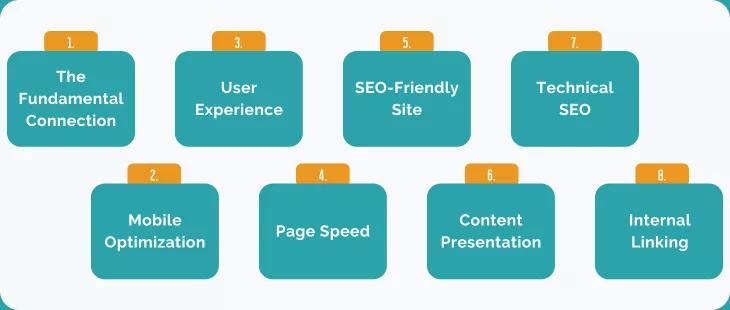
The Impact of Website Design on Search Engine Optimization (SEO)
Achieving a strong online presence is a top business priority in the ever-evolving digital landscape. One of the key strategies to achieve this is through Search Engine Optimization (SEO). However, many businesses often overlook the pivotal role that website design plays in SEO success. In this article, we delve into the profound connection between website design and SEO and explore how a well-crafted design can catapult your website to the top of search engine results.
The Fundamental Connection
The synergy between website design and SEO is intricate and multifaceted. A strategic and well-executed website design can significantly enhance your website's search engine visibility, thus attracting more organic traffic. Several critical elements intertwine to influence your website's performance in the eyes of search engines.
Content Structure: The way your content is organized and presented matters. A well-structured layout ensures that search engines can easily crawl and index your pages, improving your chances of ranking higher.
Image Optimization: Optimizing images for faster loading speeds is crucial. Large, unoptimized images can slow down your site, resulting in lower rankings and reduced traffic.
User Experience (UX): UX is a pivotal factor. A website that provides an exceptional user experience keeps visitors engaged longer, reducing bounce rates—a metric closely monitored by search engines for ranking purposes.
Responsive Design and Mobile Optimization
With the proliferation of mobile devices, the landscape of website design has undergone a transformative shift towards responsive design. A responsive design ensures your website adapts seamlessly to various devices, including smartphones and tablets. Google recognizes mobile-friendliness as a critical ranking factor. Websites that fail to offer a user-friendly mobile experience are penalized with lower rankings and diminished traffic.
User Experience and SEO
The correlation between user experience and SEO is undeniable. A user-friendly interface leads to prolonged user sessions, heightened engagement, and lower bounce rates. Google's algorithms take these factors into account when ranking websites. Websites that prioritize user experience by offering easy navigation and engaging design elements consistently earn better positions in search engine results.
Page Speed and Load Times
Website design directly influences page loading times and overall speed. A sluggish website can deter potential visitors and result in missed opportunities. Google's algorithms prioritize page speed, and websites with prolonged load times are likely to experience lower rankings and reduced traffic. Thus, optimizing your website's loading times is imperative for SEO success.
SEO-Friendly Site Architecture
An organized website structure with a logical hierarchy is essential for SEO. Properly prioritized keywords within your site's architecture can improve search engine visibility. A well-structured site architecture ensures that search engines can efficiently crawl and index your website, contributing to higher rankings.
Content Presentation and Readability
Effective content presentation goes beyond aesthetics—it impacts readability and user engagement. Proper formatting, typography, and layout enhance content readability, resulting in an improved user experience. Google's algorithms analyze user engagement metrics such as bounce rates and session duration to gauge the quality of a website. A well-presented webpage with user-friendly content formats leads to longer sessions and decreased bounce rates, boosting SEO performance.
Technical SEO Aspects
In the realm of website design, technical aspects play a pivotal role. Clean code, schema markup, and meta tags are technical components that significantly influence SEO. Clean code contributes to faster website loading times, thus enhancing the user experience. Schema markup provides essential information to search engines, improving rankings. Attention to these technical details can make a substantial difference in SEO performance.
Navigation and Internal Linking
Effective navigation and strategic internal linking enhance user experience and impact SEO. Navigation ensures users can easily traverse your website, while internal linking maintains a logical content hierarchy. These factors reduce bounce rates, increase session durations, and improve click-through rates—all contributing to SEO success.
Case Studies and Real-World Examples
The impact of website design on SEO is not a mere theory; it's a demonstrated reality. Real-world examples underscore this connection. Take Airbnb's website redesign in 2014, which resulted in a remarkable 30% surge in bookings. The improvements in user experience, site speed, and mobile optimization played a pivotal role. Similarly, Mozilla's redesign efforts yielded a striking 60% increase in user engagement. These cases unequivocally affirm that website design wields substantial influence over SEO performance.
In conclusion, the symbiotic relationship between website design and SEO is undeniable. An intelligently crafted website design enhances the user experience and propels your website up the search engine rankings. To unlock the full potential of web design for SEO and ensure your business thrives in the digital realm, consider consulting experts specializing in both disciplines. Your website is your digital storefront—make it inviting, engaging, and optimized for success.
Ready to elevate your website's design and SEO performance? Contact WebCube Digital Marketing Services today, and let us help you transform your online presence.

